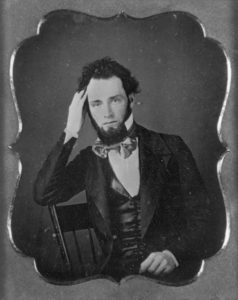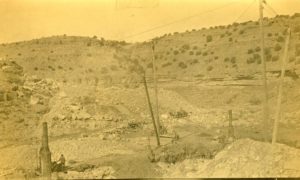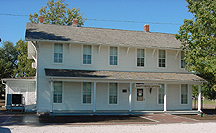Remembering Santa Fe Railway
Discover the history of the Atchison, Topeka and Santa Fe Railway (ATSF) as Feb 11 marked the 159th anniversary of the railway's creation. Climb aboard as we uncover the creation, progress and impact of this railway on Kansas. Legend has it that Cyrus K. Holliday wrote the charter for the railway during a two-day period in the late 1850's.
Beginning of the railway

Cyrus K. Holliday
photo credit KSHS
The Kansas Territorial Legislature created the Santa Fe Railway on Feb 11, 1859. Holliday wrote the charter as Kansas was still a territory and had no general incorporation laws. The charter named the new railroad system the Atchison and Topeka Railway Company. The company elected Holliday as the first president in 1860.
Despite lofty ambitions and a solid beginning, the project stalled for two years due to a severe drought in 1860 and the onset of the Civil War in 1861. President Abraham Lincoln signed a land grant bill on March 3, 1863, that provided the project with necessary funds through the sale of sections of land. This also promoted the settlement of the state, as passengers would get a free or reduced rate on their ticket if they purchased land. Real estate offices were set up across the area. Part of the stipulation for the land grant bill required the railway cross the Kansas-Colorado border, and be completed and in operation by March 3, 1873.
Breaking ground

Construction in New Mexico
photo credit: KSHS
Stockholders voted to change the name of the railway on Nov 23, 1863 to the Atchison, Topeka & Santa Fe Railway Company. The administration of the company was also changing. Due to the Civil War, they struggled to do anything more than keep the organization intact and to find solid financial investors. They finally succeeded in securing a reliable construction company and ceremonially overturned the first patch of earth to mark the beginning of construction in Topeka on Oct 30, 1868. A crowd of around 20 people witnessed the event including Holliday.
By spring of the following year, track-layers were making rapid progress to the western border and in April 1, 1869, the very first trip occurred from Topeka to Wakarusa. One June 23, the first timetable was issued, showing a line of service covering 17 miles to Carbondale. Residents of Burlingame excitedly reported seeing the "iron horses" approaching around September.
Iron horses riding West
By the summer of 1870, the line was completed to the city of Emporia. This provided cattle drivers from Texas a new source of traffic. One year later, the track stretched all the way to Netwon, inching closer and closer to the Colorado border. In May 1872 the line was completed to Wichita and from Topeka to Atchison, giving the company hope they would reach their goal of the border by their deadline. The next few months were frantic, full of human predators, tight money, bad weather, human error and other complications that made the company fear they would miss their deadline. On Dec 28, 1872, the line was completed five miles beyond the Kansas-Colorado border, securing their land grant funds.
Expansion
The railway ran through the Kansas-Colorado border by 1873 and ran to Pubelo, Colorado, in 1876. The railway never actually reached the namesake city of Santa Fe, New Mexico, as the terrain was deemed too difficult to traverse and construct. Additionally, an employee of the Burlington Route, Fred Harvey, began operating a Topeka lunchroom for the railway. Harvey secured a contract with the railway to operate a hotel and restaurant in Florence, Kansas, two years later. This was the start of his Harvey House empire, which provided opportunities for young ladies from rural areas to work, gain an education and travel. He would go on to operate dining cars staffed by now-famous "Harvey House Girls."
Enduring legacy
The next 100 years saw the railway acquire various smaller companies, expand lines to the South, North and even further West. Various engines, cars and technology were all a part of the legacy of the railway. Rail lines were the most popular form of transportation for many due to its affordability, luxury and ability to quickly get from one part of the country to another. The first diesel locomotive began operating on the line in Feb 1935. The Harvey dining cars were in use until the end of 1968. In 1991 the company moved from the Railway Exchange Building in Chicago, a place they had called home since 1904, to Schaumburg, Illinois. The 1990's saw much of the lines sold and split between other rail companies in the U.S. In 1993, the company finished making Schaumburg, Topeka and Kansas City the central hubs for dispatch, crews and various other functions. On June 30, 1994, Santa Fe and Burlington Northern announced their agreement to merge, which was approved on July 20, 1995. The railway became the Burlington Northern Santa Fe railway and now goes by BNSF.
Learn more about the city and history of the area by visiting the Topeka Room on the second floor of the library.














